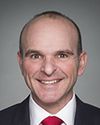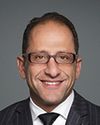Thank you.
My name is Michael Spratt. I'm a criminal defence lawyer. I practise here in Ottawa, and I'm here for the Criminal Lawyers' Association.
In typical defence lawyer fashion, I filed a written brief, and I'll have to ask for an extension of time so that this committee can consider it. It was sent in today, but I'm sure it will be translated and distributed to you, so I won't go into more depth about the organization. That's all in the written submission.
The Criminal Lawyers' Association supports legislation that's fair, modest, and constitutional. While we support the very important objectives of protecting society from the dangers of impaired driving, we're not able to support this bill in the current form, given some of the legal and constitutional problems with it.
Now, in my written submissions, you'll see that we fully adopt the written submissions of the Canadian Bar Association and the brief from the Barreau du Québec, which are available to the committee. There are matters in there that I'm not going to touch on orally or in my written submissions, but we fully agree with them.
I'd like to touch on three areas. The first is the new offence of operating a vehicle or conveyance and being impaired within two hours after operating it; the second area is the method of taking the samples and demanding samples, and the last area is the random breath testing.
I think a bit of history might be important. I'm sure this committee knows it better than me, but this bill, Bill C-46, very closely resembles a private member's bill introduced last year, Bill C-226. I would commend the committee to examine the testimony presented at the public safety committee on that bill, given the overlap.
Of course, Bill C-226 is virtually identical to a bill introduced by the former government, Bill C-73. The reason I bring up that history is that the public safety committee found, for Bill C-226, that the legal problems presented by the bill far outweighed the potential benefits that the bill could deliver. The committee was also not convinced that the majority of the measures in Bill C-226 were appropriate. Much of the same problems exist in this bill.
Now, the first of those problems is the new offence itself. Currently, as you know, it's an offence to operate a vehicle while impaired or over the legal limit. In Canada right now, it's not an offence to drink alcohol, to drive a car, or drink alcohol after you've driven a car. It's an offence to be impaired or over the limit while you're operating the vehicle. Unfortunately, the proposed new section 320.14 dramatically changes that, and dramatically shifts how impaired law is going to play out on our roads and in our courts. That section extends the prohibition to being over the legal limit within two hours after ceasing to operate the vehicle. That is designed to combat what is not really a problem—but the bill says it is—bolus and post-driving drinking.
I can tell you that even the litigators who specialize in impaired cases bring these defences very rarely, and they succeed on an even rarer basis. It's not a problem that is plaguing our courts, but the solution to that problem as proposed by this bill is very problematic. This section is overly expansive and, as I said, it comes with little benefit.
What we're going to see here are constitutional challenges to overbreadth, but, more importantly, constitutional challenges to a reversal of the burden of proof. Under this section, if someone goes to a wine tasting or a cocktail party, drives there with no blood alcohol level, tastes some wine or drinks some scotch, and then comes under police scrutiny for whatever reason, a breath sample is demanded and ultimately that person blows over the legal limit, then it's going to be incumbent on the accused to present evidence about their state of mind, to in effect testify under the second prong of the exception that they weren't operating while impaired, and to call evidence from a toxicologist to read back their consumption to the readings.
This is an unprecedented and very dangerous aspect: reversing the burden of proof. It's even more problematic when this bill requires that the accused present scientific or toxicology evidence. Of course, that puts this defence, this exception, this reversal of the burden, out of the reach of individuals who experience poverty or are even part of the middle class. The court system is already out of the reach of those people, and this only makes the problem worse. It's ironic that the bill reverses that burden and puts that burden on the accused person, at the same time eliminating that burden completely from the crown to call that sort of expert evidence.
The second problem here is in proposed section 320.28, regarding a police officer's reasonable grounds to believe that a person has operated a vehicle or the conveyance with an impairment to any degree under proposed paragraph 320.14(1)(b). Currently, the police officer needs to have the reasonable belief that the vehicle was operated in the last three hours, and of course, the rationale for that is apparent. When you do the tests on the person and when you take the breath samples from the person, you want to do that as close to the time of driving as possible so you can relate the two. With no time requirement here, police officers with reasonable and probable grounds can demand samples from an individual hours or even days after that individual operated a vehicle. It's even more absurd when that provision is combined with proposed subsection 320.31(4), the section that alleviates any burden on the crown to call scientific evidence if the samples are taken outside of two hours to read back.
I'll pause to say that calling of this scientific evidence adds virtually no time to a trial. It can be done through documents. It's often done by calling a witness on video, and defence counsel needs the leave of a court to cross-examine. So this isn't a provision that frustrates justice or impedes the crown in any way, but this new section, which eliminates the need to call a toxicologist and mathematically add up five milligrams of alcohol for every 30 minutes, is a problem, because if an officer demands a breath sample from somebody, say a day after they drove, and that person provides a sample and blows zero because they have no alcohol in their system at all, then through the operation of proposed section 320.31 and the read-back mean that the person is deemed to have blown 240 or deemed to have an alcohol concentration of 240 even though he blew zero a day after driving. It doesn't make any sense. I've had various people look at this, because it can't be right. But that seems to be the reading of it, and that's deeply problematic, and, I would wager—and we'll see if I'm right—unconstitutional.
Now, in the last two and a half minutes, I want to deal with what I think is the most important problem of this bill, and that is the random breath testing. Let's just cut to the chase here. There's nothing random and there will be nothing random with this breath testing. What we know now, from right here in Ottawa and the 2016 Ottawa police traffic data race collection program—arising out of a human rights complaint for racial profiling—in which the police collected race data about everyone they stopped for every traffic violation, is that if you're a visible minority or part of a marginalized group or living in an overpoliced area, you are stopped disproportionately compared to the rest of the population. In simple terms, if you're black, if you're Arab, if you're a visible minority, you get pulled over more often than a white person does. That study went on to find that those people actually were not committing offences at any higher rate than anyone else was; in fact, the rate was lower.
So when you put those things together—and this is what the Ontario Human Rights Commission has done—it means that visible minorities are pulled over by the police more often for no reason. That's what is going to happen here. We've seen it in the enforcement of the current marijuana laws, which disproportionately affect minorities. We've seen it with the carding and street checking programs, which disproportionately affect minorities. This is just legislative carding in a car. That's how it's going to play out.
Now, there has been some constitutional analysis, and I'm sure you'll point me to Professor Hogg's analysis. That analysis, in our opinion, fails to take into account the reality of how this is going to play out. We're talking about people who are already disproportionately stopped, who are taken out of their car, denied right to counsel, and sometimes handcuffed. Their movements are definitely controlled; they are detained, and their car is searched for weapons by the police. They can be questioned and they are searched. If that happens to you or me once in a lifetime, it might be a slight inconvenience. The charter analysis isn't going to look at you and me; it's going to look at the young black man who is stopped five, 10, 20 times. Go and read Desmond Cole's piece in Toronto Life about carding and the effect that has on someone. That's the analysis that will take place, so it's a big problem.
Imagine you are a young black father picking up your kid from school and you're pulled over and subjected to this testing for the fifth or sixth time. That is the analysis that will take place. We know that some of these impaired laws already on the books are saved by section 1. They violate the Constitution and are saved by section 1. When we add how this is going to play out on the ground and look at the realities of how it's going to play out, I wouldn't be as confident as Professor Hogg, as respected as he is, to say that it is going to pass a section 1 analysis.
I'd be pleased to answer any of your questions. Of course, there are more expansive comments in my written brief.












